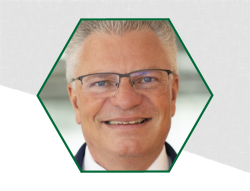This abstract and keynote speech addresses the challenges in the development of additive manufacturing (AM) using selective laser melting (SLM) technology. With this technique, AM can produce superior and sustainable parts by the application of bionic design. In the last two decades L-PBF increased it’s productivity by a factor of 200, however it still misses commercial competitiveness. One of the main current bottlenecks lies in the high production costs of more than €1000 per kilogram of manufactured
material. These have their cause mainly in inefficient build up rates and expensive powder costs. Another constraint is the need for ensuring consistent and high-quality parts, requiring a certified quality assurance process.
To address these challenges, we developed a project idea whose goal it is to develop an optimized AM product by integrating a ring-mode laser as well as a manufacturing monitoring system for quality assurance and faster build rates. The ultimate goal is to achieve a certified and profitable product with target costs of less than €100 per kilogram of certified material to be competitive in the market.
The proposed solution aims to improve the efficiency of the SLM process, resulting in lower production costs and faster production rates, while maintaining consistent high-quality parts. The ring-mode laser provides more uniform energy distribution and reduces thermal gradients, improving the material properties and reducing distortion int the manufactured part. This will move the threshold for the maximum robust melting productivity by a factor of ten due to higher laser scanning speeds and an improved layer thickness.
The planned manufacturing monitoring system which is combined with quick destructive dynamic specimen testing ensures consistent quality while detecting and correcting any defects during production. This allows the approval of static and fatigue material properties with the certified absence of pores with a diameter bigger than 0.1 mm.
The optimized SLM process which will be developed in this project idea could enable a more cost-effective production of metal parts and reduce the entry barriers for small and medium-sized corporations. Overall, the proposed solution could enhance the metal additive manufacturing industry, enabling competitive and sustainable production of high-quality metal parts for all kinds of applications.
Keywords
- 3D Printing

